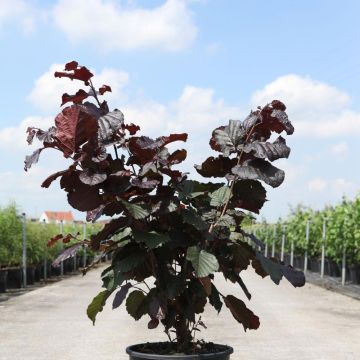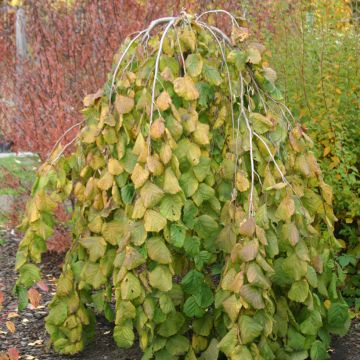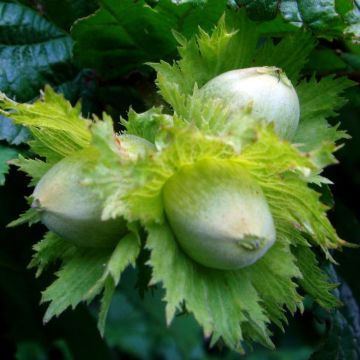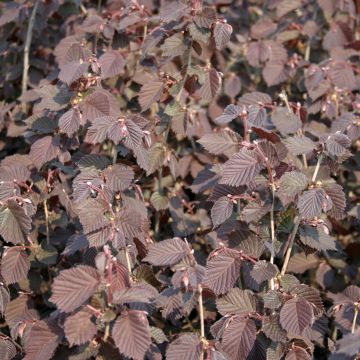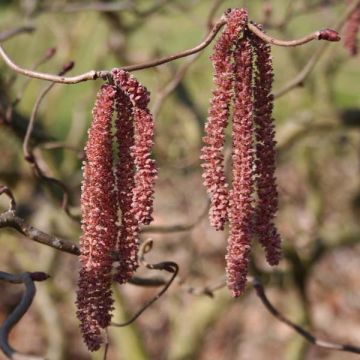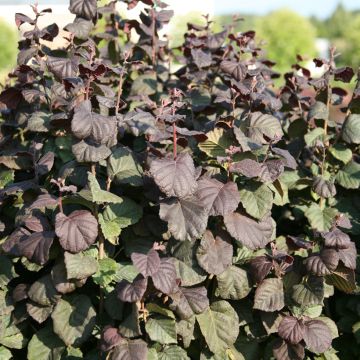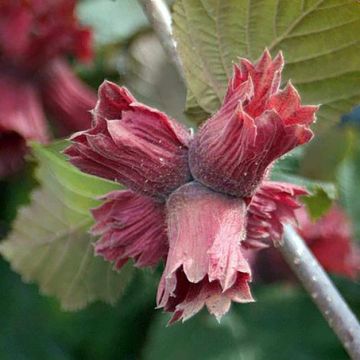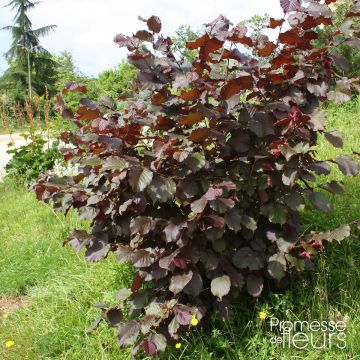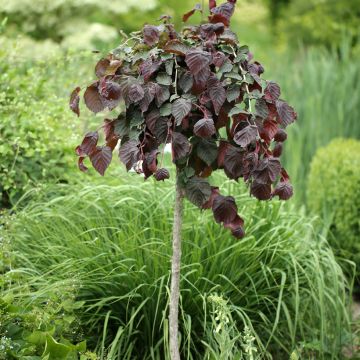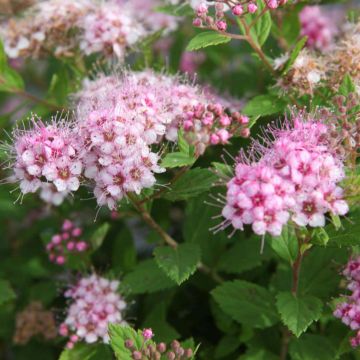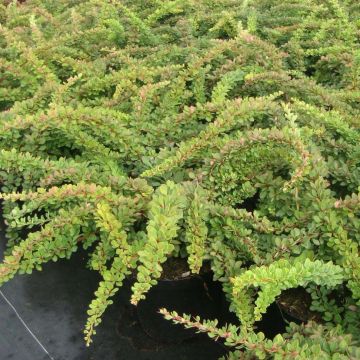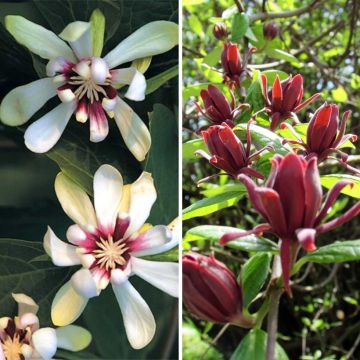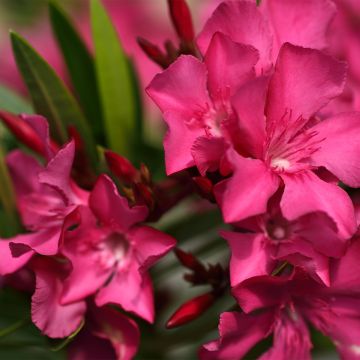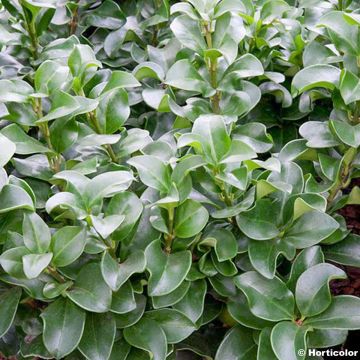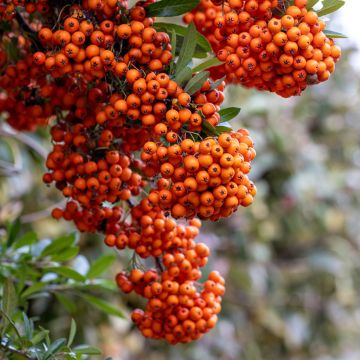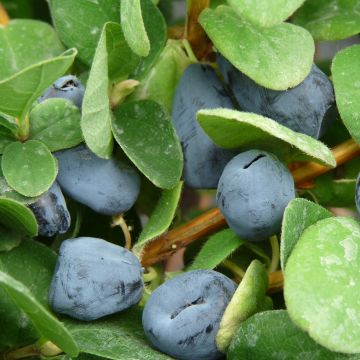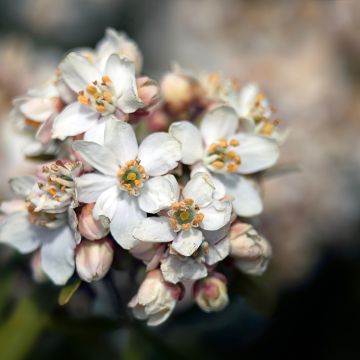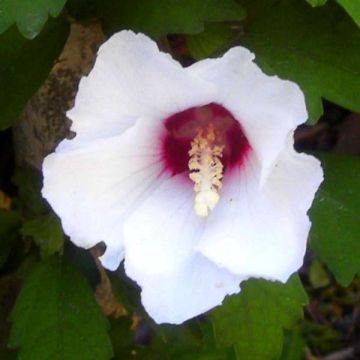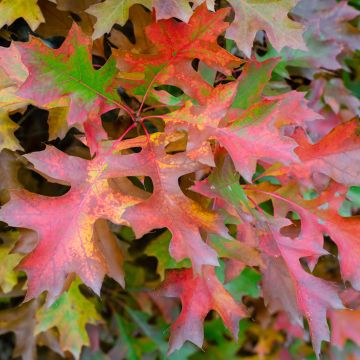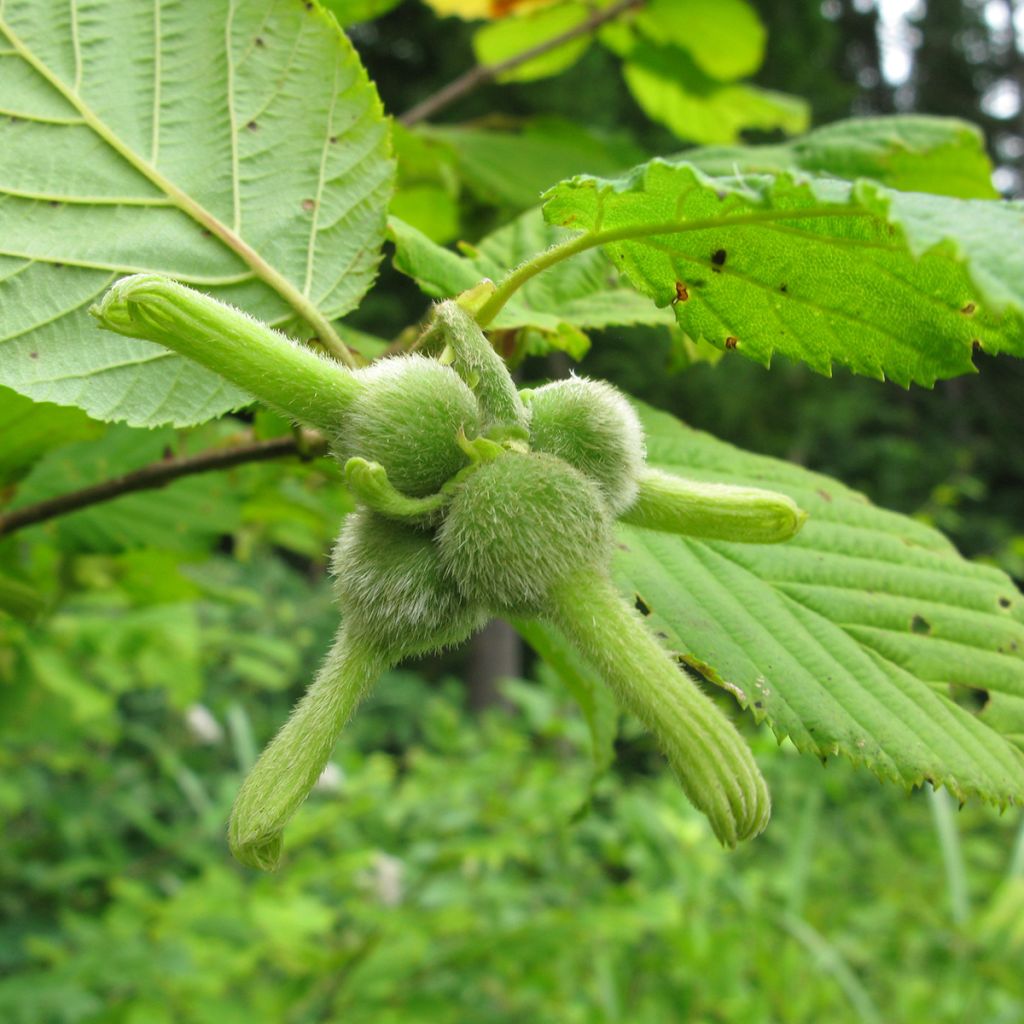

Corylus sieboldiana - Asian Hazel
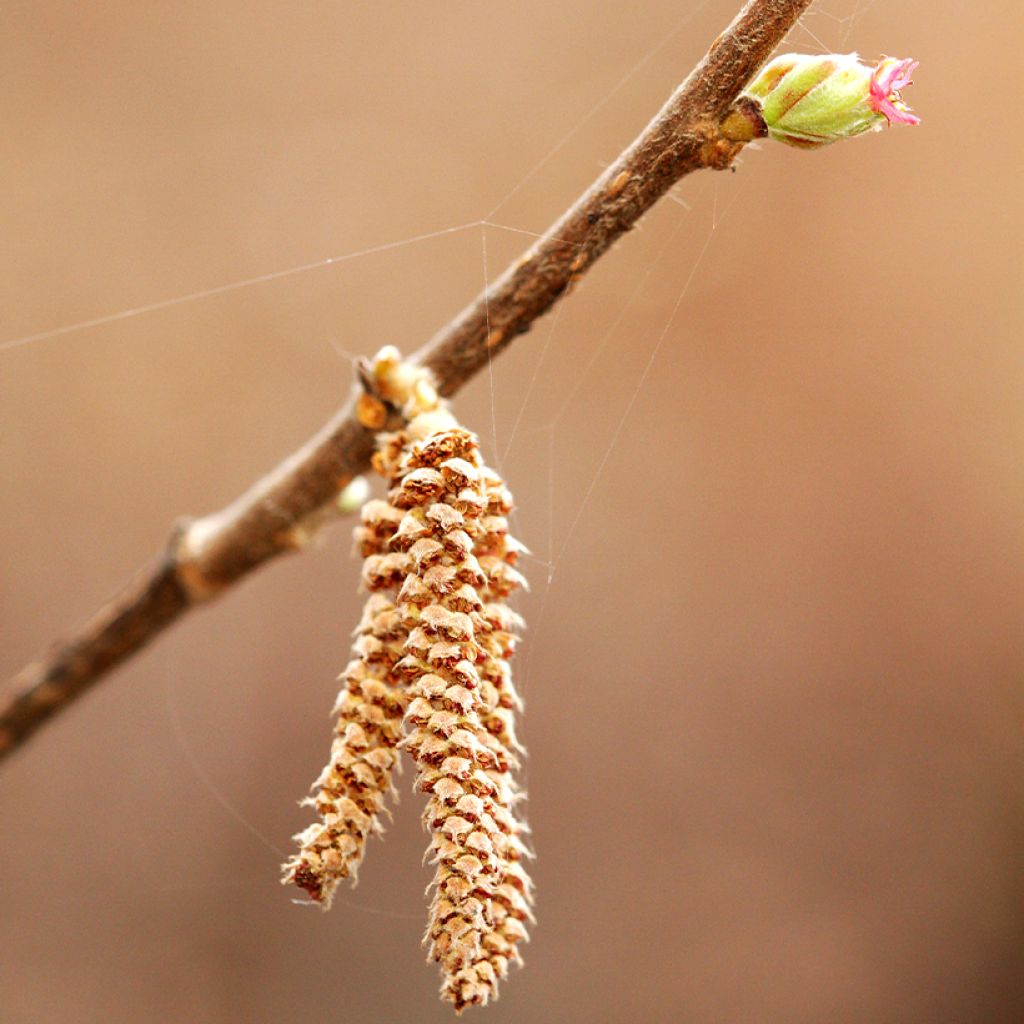

Corylus sieboldiana - Asian Hazel
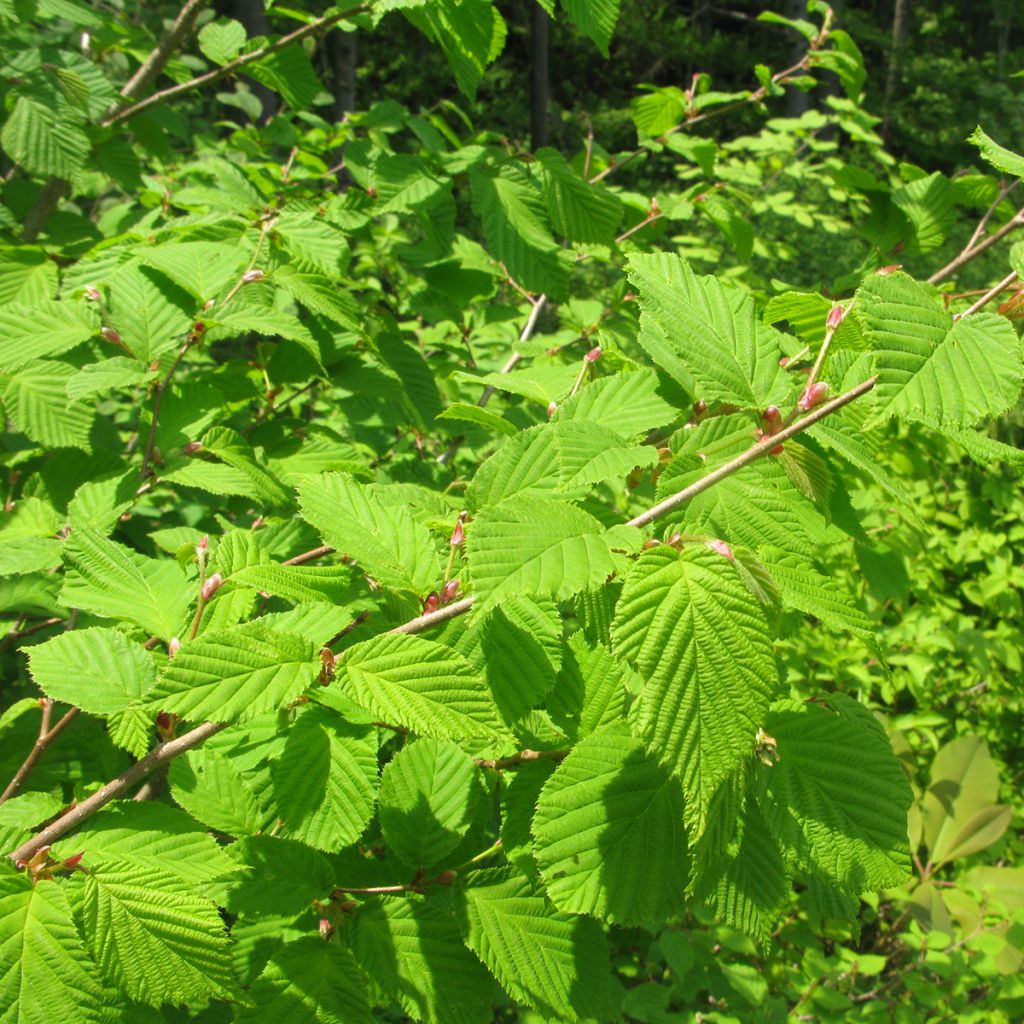

Corylus sieboldiana - Asian Hazel
Corylus sieboldiana - Asian Hazel
Corylus sieboldiana
Asian hazel, Siebold's hazel
This item cannot be shipped to the selected country
Delivery charge from €5.90
More information
Schedule delivery date,
and select date in basket
This plant carries a 24 months recovery warranty
More information
We guarantee the quality of our plants for a full growing cycle, and will replace at our expense any plant that fails to recover under normal climatic and planting conditions.
From €5.90 for pickup delivery and €6.90 for home delivery
Express home delivery from €8.90.
Does this plant fit my garden?
Set up your Plantfit profile →
Description
The Corylus sieboldiana, also known as the Japanese Hazel, is a Korean and Japanese botanical species related to the common Hazel (Corylus avellana) found in our countryside. It is a beautiful deciduous bush, very hardy and not demanding in terms of soil. It also produces small edible hazelnuts, but they are strangely wrapped in a kind of bristly "elephant trunk", which is quite unpleasant to touch. This Hazel grows attractive male aments in winter and red female flowers in March. For collectors of rare plants!
Corylus sieboldiana belongs to the birch family, like all hazels. It is native to Japan and Korea and is found in mountain forests and thickets. This bush, which can reach 5-6m (16-20ft) in height and over 3m (10ft) in width in our climates, arrived in Western Europe in 1904. It has maintained a discreet place in cultivation. It is a self-fertile and monoecious fruiting bush: the male flower heads, distinct from the female flower heads, are borne in different areas on the same plant. It loses its leaves in winter.
Siebold's Hazel is a reasonably fast-growing bush which can produce suckers from its base. With a bushy habit, it develops multiple small trunks and dense, rounded vegetation. Its bark is grey-brown, initially smooth, becoming rough with age. The young branches are downy, covered with long glandular hairs and have numerous visible round and linear lenticels. The young spring leaves have a decorative dark spot in their centre. The mature leaves are ovate, entire, coarsely and doubly toothed at the edges. The lamina is 6 to 12cm (2 to 5in) long and 4 to 9cm (2 to 4in) wide. It is slightly downy, strongly veined, medium green in colour, and turns golden yellow in autumn before falling.
The male flowers appear on the plant during the summer and bloom in February-March before the leaves appear. They are drooping catkins, bronze-yellow in colour, grouped in 2 to 4, quite decorative. The female flowers, visible in March, are shaped like a bud measuring 6 to 8mm (1in), partially concealing magenta-red stigmas. After pollination, small clusters of hazelnuts form. They are small, surrounded by a thick shell that ends in a long fringed tube. The whole group does not exceed 3cm (1in). Each hazelnut, ovoid in shape, measures just over 1cm (1in) in length. Its hard shell protects an edible seed rich in oil. Their curious shell is sometimes purplish when immature, with dense yellowish and pale brown bristles. They are harvested between September and October. The presence of the slightly irritating shell makes peeling these hazelnuts quite tedious.
This excellent Japanese Hazel prefers to be planted in a free hedge or thicket. It will be satisfied with any soil, preferably limestone, but not too clayey. It is a very hardy tree, not water-demanding, and hassle-free. For example, combine it with amelanchiers, Japanese goumi, male cornel, and other aronias to create a haven for birds and a wild orchard that will delight the curious. Its vegetation provides shelter for wildlife, and squirrels and other wild animals appreciate its hazelnuts.
Report an error about the product description
Plant habit
Flowering
Foliage
Safety measures
Botanical data
Corylus
sieboldiana
Betulaceae
Asian hazel, Siebold's hazel
East Asia
Phytophotodermatoses
Cette plante peut provoquer l'apparition de réactions cutanées indésirables en cas de contact suivi d'une exposition au soleil.
Ne la plantez pas là où de jeunes enfants peuvent évoluer. Evitez l'exposition au soleil après l'avoir manipulée. Evitez tout contact avec la peau: privilégiez l'emploi de gants pour la manipuler. En cas de contact, lavez-vous soigneusement les mains et rincez abondamment à l'eau la zone concernée. Lavez les vêtements entrés en contact. En cas de réaction cutanée, contactez votre médecin ou le centre antipoison le plus proche de chez vous. En cas d'atteinte étendue, appelez sans tarder le 15 ou le 112.Pensez à conserver l'étiquette de la plante, à la photographier ou à noter son nom, afin de faciliter le travail des professionnels de santé.
Davantage d'informations sur https://plantes-risque.info
atteinterespiratoire
Cette plante peut entraîner des symptômes allergiques.
Evitez de la planter si vous ou vos proches souffrez de rhinite saisonnière ("rhume des foins").
Davantage d'informations sur https://plantes-risque.info
Other Corylus - Hazelnuts
Planting and care
The Corylus sieboldiana is grown like our common hazelnut. It thrives in full sun or partial shade. Plant it in deep, well-drained soil, not too clayey, preferably with a limestone tendency. While it appreciates some moisture at its base, this tree generally does not require watering once established unless it is a hot and dry summer. Water and fertiliser for fruit trees will improve the appearance and yield of this bush. It is preferable, but not essential for good fruiting, to plant at least two individuals.
Planting period
Intended location
Care
This item has not been reviewed yet - be the first to leave a review about it.
Hedge shrubs
Haven't found what you were looking for?
Hardiness is the lowest winter temperature a plant can endure without suffering serious damage or even dying. However, hardiness is affected by location (a sheltered area, such as a patio), protection (winter cover) and soil type (hardiness is improved by well-drained soil).

Photo Sharing Terms & Conditions
In order to encourage gardeners to interact and share their experiences, Promesse de fleurs offers various media enabling content to be uploaded onto its Site - in particular via the ‘Photo sharing’ module.
The User agrees to refrain from:
- Posting any content that is illegal, prejudicial, insulting, racist, inciteful to hatred, revisionist, contrary to public decency, that infringes on privacy or on the privacy rights of third parties, in particular the publicity rights of persons and goods, intellectual property rights, or the right to privacy.
- Submitting content on behalf of a third party;
- Impersonate the identity of a third party and/or publish any personal information about a third party;
In general, the User undertakes to refrain from any unethical behaviour.
All Content (in particular text, comments, files, images, photos, videos, creative works, etc.), which may be subject to property or intellectual property rights, image or other private rights, shall remain the property of the User, subject to the limited rights granted by the terms of the licence granted by Promesse de fleurs as stated below. Users are at liberty to publish or not to publish such Content on the Site, notably via the ‘Photo Sharing’ facility, and accept that this Content shall be made public and freely accessible, notably on the Internet.
Users further acknowledge, undertake to have ,and guarantee that they hold all necessary rights and permissions to publish such material on the Site, in particular with regard to the legislation in force pertaining to any privacy, property, intellectual property, image, or contractual rights, or rights of any other nature. By publishing such Content on the Site, Users acknowledge accepting full liability as publishers of the Content within the meaning of the law, and grant Promesse de fleurs, free of charge, an inclusive, worldwide licence for the said Content for the entire duration of its publication, including all reproduction, representation, up/downloading, displaying, performing, transmission, and storage rights.
Users also grant permission for their name to be linked to the Content and accept that this link may not always be made available.
By engaging in posting material, Users consent to their Content becoming automatically accessible on the Internet, in particular on other sites and/or blogs and/or web pages of the Promesse de fleurs site, including in particular social pages and the Promesse de fleurs catalogue.
Users may secure the removal of entrusted content free of charge by issuing a simple request via our contact form.
The flowering period indicated on our website applies to countries and regions located in USDA zone 8 (France, the United Kingdom, Ireland, the Netherlands, etc.)
It will vary according to where you live:
- In zones 9 to 10 (Italy, Spain, Greece, etc.), flowering will occur about 2 to 4 weeks earlier.
- In zones 6 to 7 (Germany, Poland, Slovenia, and lower mountainous regions), flowering will be delayed by 2 to 3 weeks.
- In zone 5 (Central Europe, Scandinavia), blooming will be delayed by 3 to 5 weeks.
In temperate climates, pruning of spring-flowering shrubs (forsythia, spireas, etc.) should be done just after flowering.
Pruning of summer-flowering shrubs (Indian Lilac, Perovskia, etc.) can be done in winter or spring.
In cold regions as well as with frost-sensitive plants, avoid pruning too early when severe frosts may still occur.
The planting period indicated on our website applies to countries and regions located in USDA zone 8 (France, United Kingdom, Ireland, Netherlands).
It will vary according to where you live:
- In Mediterranean zones (Marseille, Madrid, Milan, etc.), autumn and winter are the best planting periods.
- In continental zones (Strasbourg, Munich, Vienna, etc.), delay planting by 2 to 3 weeks in spring and bring it forward by 2 to 4 weeks in autumn.
- In mountainous regions (the Alps, Pyrenees, Carpathians, etc.), it is best to plant in late spring (May-June) or late summer (August-September).
The harvesting period indicated on our website applies to countries and regions in USDA zone 8 (France, England, Ireland, the Netherlands).
In colder areas (Scandinavia, Poland, Austria...) fruit and vegetable harvests are likely to be delayed by 3-4 weeks.
In warmer areas (Italy, Spain, Greece, etc.), harvesting will probably take place earlier, depending on weather conditions.
The sowing periods indicated on our website apply to countries and regions within USDA Zone 8 (France, UK, Ireland, Netherlands).
In colder areas (Scandinavia, Poland, Austria...), delay any outdoor sowing by 3-4 weeks, or sow under glass.
In warmer climes (Italy, Spain, Greece, etc.), bring outdoor sowing forward by a few weeks.

































